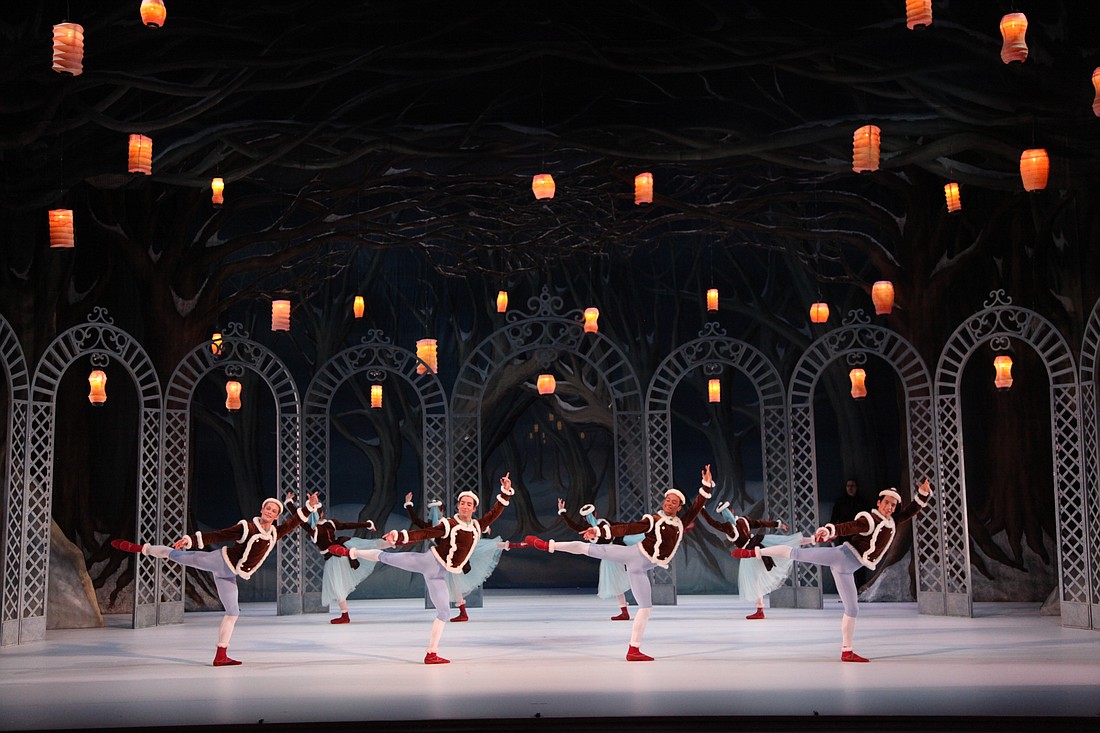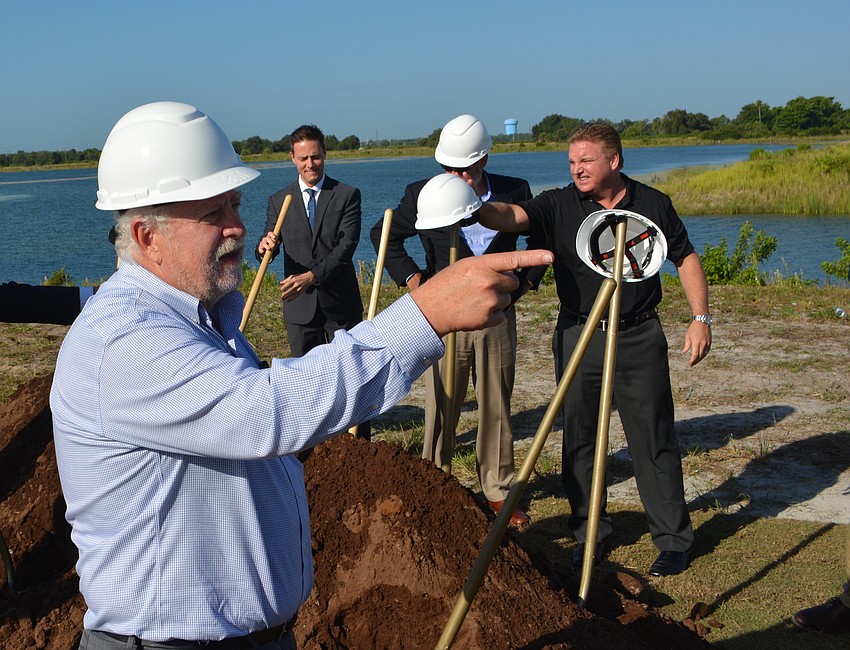- April 28, 2024
-
-
Loading

Loading

With the July 4 holiday upon us, we celebrate our country's liberties, which we often translate as giving us the freedom to seize an opportunity.
Yes, the land of opportunity often can mean chasing our personal dreams to build a product, a company or a fortune.
However, it can also mean shaping the lifestyle of a particular area to build a unique community.
Here in our region, Sarasota and Lakewood Ranch are shining examples of how the actions of a group of individuals can combine to influence the trajectory of those communities and eventually set them apart.
Those actions have been responsible for building one of the nation's top arts and cultural communities and the country's No. 1-selling multigenerational, master-planned community.
Two major factors led to Lakewood Ranch transitioning from an actual ranch to one of America's most desired residential communities.
The first was the opening of the Manatee County section of Interstate 75 in the early 1980s, along with the highway's final length of completion in 1993.
"It was a point at which opportunities came to our doorstep," said Laura Cole, a senior vice president for Schroeder-Manatee Ranch, the developer of Lakewood Ranch. "I-75 put a positive light on the possibilities."
At the time, SMR was operating cattle ranching, citrus, tree and turf farming and aggregate mining operations. Since the early 1900s, the Uihlein family, an original owner of the Schlitz Brewery, had owned the 33,000-acre property.
It was in a word, wild, and not inviting to anyone wanting to build a home and raise a family. With the new interstate, though, thoughts of a residential community gained credence as potential residents would have easy access to several major metropolitan areas and jobs. And if a new community was built, those from Tampa to Fort Myers would have easy access to any businesses in the new community.
"I-75 made it viable," Cole said. "We wouldn't have had that possibility without it."
Still, another push was needed to move SMR forward. That flew into the picture in the late 1980s and early 1990s.
Both Manatee and Sarasota counties were concerned about overcrowding at the Sarasota Manatee Airport and were looking at Lakewood Ranch as an attractive site to build a new, larger airport. Eventually, the airport authority threw out the idea of building a new airport in Lakewood Ranch in 1985.

Cole said government agencies considering an airport for Lakewood Ranch was a "pressure point" which caused the Lakewood Ranch parent company to consider other options. One was building a residential community.
Members of the Uihlein family, SMR's board and Rex Jensen — now the company's CEO and president who first joined SMR in 1990 — began taking trips around the country to examine other master planned communities.
"It was the same story, that you needed a group of believers," Cole said of the thought of building a residential community where most people didn't think it was possible. "It took a lot of belief. A thousand people would say it wasn't viable. The reality is that you have to make it work."
SMR, which began its transition to building residential neighborhoods in February 1994, made it work. Today, Lakewood Ranch has more than 63,000 residents in 33 residential villages.
More than 40% of the 33,000 acres has been set aside as open space or recreation. More than 14,000 acres have been certified green by the Florida Green Build Coalition. Lakewood Ranch features 150 miles of trails, nine parks and three county parks.
"It was nice that (the Uihleins) owned that land," Cole said. "The family had that land a long time, and it allowed us to accommodate a longer-term vision. With that land, (SMR) didn't have to maximize profits on everything. Lakewood Ranch was built with less density.
"It is a great place, a great community with a great lifestyle. Give Rex credit for that. He understands that lifestyle is the lifeblood of every community. The most important element was the parks and the trails."
Cole said the other key was forming the stewardship district and the Community Development Districts.
"When (SMR officials) visited high-quality master-planned communities, they learned lessons from their mistakes," Cole said. "The smartest thing (SMR) did was creating a stewardship district. It provided a perpetual funding instrument to maintain the infrastructure."
Unlike Lakewood Ranch, Sarasota and its beautiful beaches were destined to become a thriving community based on their pure beauty. But what kind of community?
Would it offer more than a chance to get a tan or to escape winter snow?
While a push to develop a city along Sarasota Bay began in the 1880s, it was in the 1920s that Sarasota received a major boost toward becoming the arts mecca that it is today.
John and Mable Ringling began vacationing in Sarasota in 1909 and they immediately began buying property. John Ringling built a 30-room mansion named Cà d'Zan, which was completed in 1926. By that time, Ringling had also made Sarasota the winter home of his circus. A museum later was added for his extensive art collection. Sarasota had become a haven for art.
As years past, the community built its arts reputation like none other. Wealthy people moved to the area to enjoy the arts, and arts groups and benefactors moved to the area to be involved in a like-minded community.
"Sarasota is a special community," said Shaun Greenspan, a Sarasota resident whose "The Sarasota Experience" debuted this spring on WEDU, the region's PBS member station. "And what do rich people do when they have nothing to do? They go to the arts."
Greenspan's documentary covers every facet of the development of Sarasota and it also offers a meticulous and fascinating look at the formation of its arts community along with a look at those who were responsible for building it.
Whether it is strengthening its arts community or its core values, Greenspan said Sarasota's ability to evolve is perhaps its best quality.
"Sarasota always has been a pioneer town," Greenspan said. "It still is, in my opinion, a pioneer town. One thing constant is change. People say, 'I wish Sarasota would remain the same.' But because it changes, it always improves itself."
Among the many arts organizations or groups that have formed a community like none other are the Sarasota Opera, the Asolo Repertory Theatre, the Sarasota Ballet, the Players Center for Performing Arts, the Circus Arts Conservatory, the Urbanite Theatre, the Sarasota Orchestra and the Westcoast Black Theatre Troupe, among many others.
Top venues include the Van Wezel Performing Arts Hall and the Asolo Repertory Theatre.
Greenspan said the wealth, the beautiful beaches, the airport all combined to form a "perfect confluence" to build a renowned arts community.
"But it is the wonderful sense of community that I like to talk about," Greenspan said. "People here have the opportunity to create the city they want."
He said the influx of philanthropic organizations has made Sarasota even stronger over the years. And he also pointed toward an awareness that Sarasota's past has included social injustices that have spurred current residents to make sure those stay in the past.
"They make people feel welcome here who don't feel welcome in affluent communities," he said.
It all has been part of of building a one-of-a-kind community.